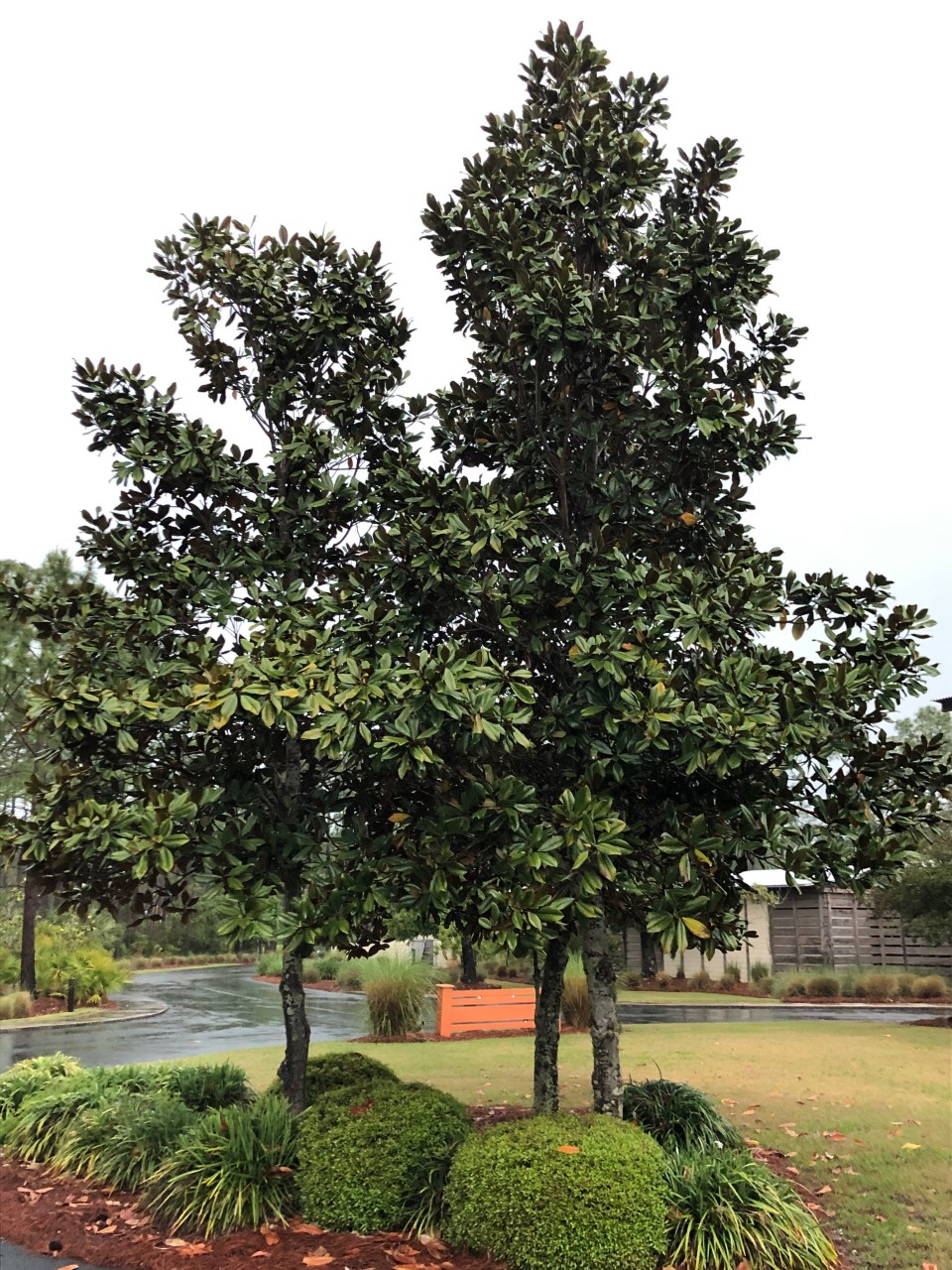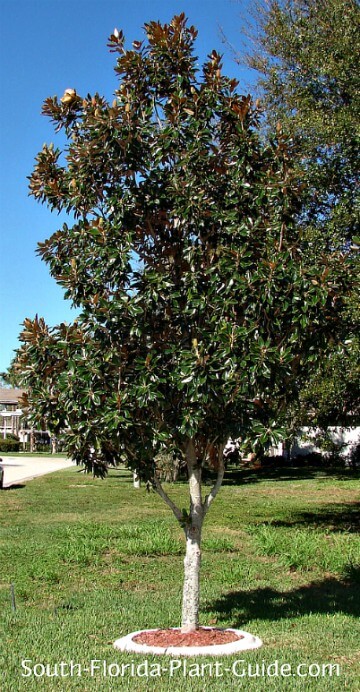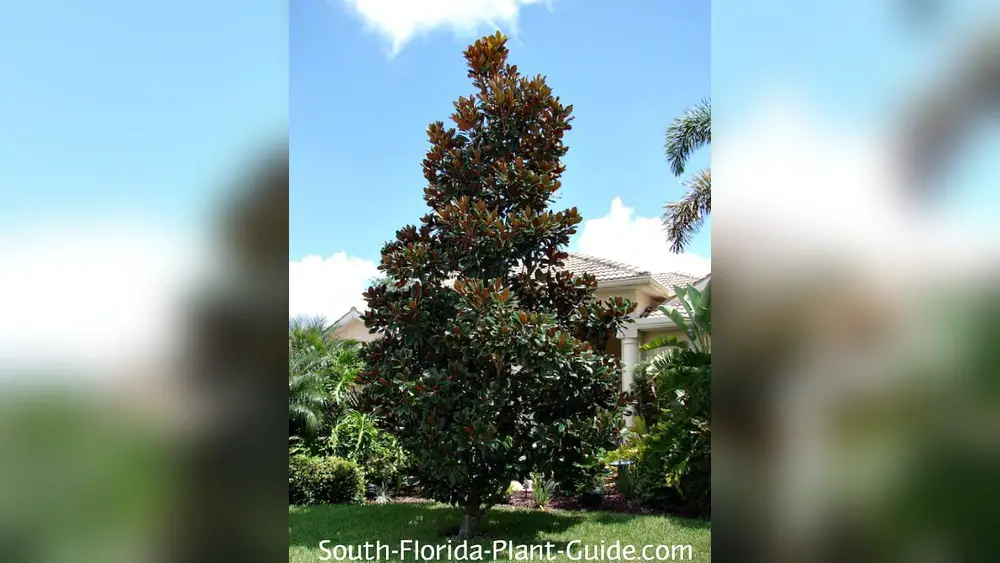If you’re thinking about planting a magnolia tree in Florida, timing is everything. Planting at the right moment can mean the difference between a healthy, thriving tree and one that struggles to grow.
You want your magnolia to develop strong roots and bloom beautifully year after year. So, when exactly is the best time to plant your magnolia tree in Florida? You’ll discover the ideal seasons for planting, why they matter, and how to give your tree the best start possible.
Keep reading to make sure your magnolia flourishes in the Florida sunshine!

Credit: nwdistrict.ifas.ufl.edu
Optimal Planting Seasons
Choosing the right season to plant a magnolia tree in Florida is key to its health and growth. The state’s warm climate affects how and when these trees take root. Planting during optimal seasons helps the tree establish strong roots before facing harsh weather.
Planting at the right time also reduces stress on the tree. It gives magnolias a better chance to thrive and bloom beautifully in your garden. Below are the best seasons to plant magnolia trees in Florida, with details on each.
Early Spring Benefits
Early spring is a prime time to plant magnolia trees. The soil begins to warm up, which encourages root growth. Planting before the summer heat lets roots settle well.
Evergreen magnolias do especially well with spring planting. They get a full growing season to build strength. This timing helps avoid damage from late winter cold snaps.
Advantages Of Fall Planting
Fall offers cooler temperatures that ease root development. The soil remains warm enough to support growth. Magnolia trees planted in fall can grow roots without summer stress.
This season suits deciduous magnolias best. They prepare for winter dormancy with strong roots in place. Fall planting also reduces water needs, as cooler weather slows evaporation.
Dormant Season Planting
Planting magnolias during dormancy means late fall or winter in Florida. Trees are not actively growing, so transplant shock is less. Roots can slowly spread before spring growth starts.
This method works well in mild climates. Dormant season planting helps trees survive temperature swings. Careful watering and protection keep roots healthy during this time.

Credit: www.south-florida-plant-guide.com
Magnolia Types For Florida
Magnolias thrive in Florida’s warm climate. Different types suit various parts of the state. Knowing their traits helps in choosing the right one for your garden. Here are the main magnolia types native and adapted to Florida.
Southern Magnolia Characteristics
The Southern Magnolia is iconic in Florida. It has large, glossy green leaves. Its white flowers are fragrant and appear in summer. This tree can grow very tall, up to 80 feet. It prefers full sun and well-drained soil. Southern Magnolias handle Florida’s heat and humidity well. Their thick leaves help reduce water loss. They are evergreen, keeping their leaves year-round.
Sweetbay Magnolia Traits
Sweetbay Magnolia is smaller and more delicate. It grows up to 30 feet tall. The leaves are lighter green and have a silvery underside. Its flowers are smaller but very fragrant. This type tolerates wet soils and can grow near water. Sweetbay Magnolias do well in partial shade. They are semi-evergreen, losing some leaves in colder weather. This tree suits coastal and swampy areas of Florida.
Other Native Varieties
Florida hosts other native magnolias too. The Cucumbertree Magnolia grows tall with large leaves and greenish-yellow flowers. The Bigleaf Magnolia has very large leaves and creamy flowers. These types prefer moist, rich soils. They are less common but add diversity to landscapes. Each type has unique care needs but all thrive in Florida’s climate.
Climate And Soil Conditions
Choosing the right climate and soil conditions is crucial for planting a magnolia tree in Florida. These factors affect the tree’s growth, health, and flowering. Understanding Florida’s environment helps you decide the best planting time and care practices. Proper soil preparation and avoiding extreme weather enhance the success of your magnolia tree.
Florida’s Warm Humid Climate
Florida has a warm, humid climate ideal for many magnolia species. The mild winters allow evergreen magnolias to thrive year-round. The high humidity supports healthy leaf growth and vibrant flowers. Magnolia trees enjoy full sun to partial shade in this climate. Avoid planting during the hottest summer months to reduce stress on young trees.
Soil Preparation Tips
Magnolias prefer well-drained, slightly acidic soil with a pH between 5.0 and 6.5. Test your soil before planting to check its pH level. Add organic matter like compost to improve soil texture and nutrients. Avoid heavy clay soils that hold water and can cause root rot. Create a planting hole twice as wide as the root ball for better root expansion.
Avoiding Extreme Weather
Protect your magnolia from Florida’s extreme weather events. Avoid planting during droughts or heat waves, as they stress young roots. Also, do not plant during heavy rain or when the ground is waterlogged. Late winter or early spring are safer times before summer storms arrive. Shield young trees from strong winds with temporary barriers if needed.
Planting Techniques
Planting a magnolia tree in Florida requires careful techniques. Proper planting sets the tree on the path to healthy growth. Attention to root care, watering, and spacing makes a big difference. Follow these simple steps for the best results.
Root Care And Handling
Magnolia trees have delicate, shallow roots. Handle the root ball gently to avoid damage. Avoid pulling or shaking the roots. If roots are tightly wrapped, loosen them carefully. Exposing roots to air for too long can harm the tree. Plant the tree soon after removing it from its container.
Proper Watering Practices
Water the magnolia deeply right after planting. Keep the soil moist but not soggy. Young trees need regular watering during the first year. Check soil moisture often, especially in Florida’s dry spells. Avoid watering leaves directly to reduce disease risk. Mulch helps keep the soil moist longer.
Planting Depth And Spacing
Plant the magnolia at the same depth as in its nursery pot. Planting too deep can cause root rot. Ensure the hole is wide enough for roots to spread naturally. Space magnolia trees at least 15 to 20 feet apart. Proper spacing allows good air flow and healthy growth.
Maintenance After Planting
Proper maintenance after planting a magnolia tree in Florida ensures healthy growth. Caring for your tree helps it adapt to the new environment. It also supports strong root development and vibrant foliage. Simple steps like mulching, fertilizing, and managing pests keep your tree thriving.
Mulching Benefits
Mulching helps keep soil moist and cool. It reduces weed growth around the tree base. Mulch adds nutrients to the soil as it breaks down. Spread a 2 to 3-inch layer around the tree, avoiding direct trunk contact. Mulching also protects roots from Florida’s heat and dry spells.
Fertilization Schedule
Feed your magnolia tree with a balanced fertilizer. Apply fertilizer in early spring before new growth starts. Use a slow-release formula to provide nutrients over time. Avoid over-fertilizing to prevent root damage. Follow up with a second feeding in late summer for best results.
Pest And Disease Management
Monitor your magnolia tree regularly for pests like scales and aphids. Remove pests by hand or use insecticidal soap if needed. Watch for fungal diseases such as leaf spot or powdery mildew. Keep the area around the tree clean and dry to reduce disease risk. Early action keeps your tree healthy and strong.

Credit: www.goldengatenurserynaples.com
Popular Magnolia Cultivars
Magnolia trees bring charm and elegance to Florida gardens. Choosing the right cultivar is key for success. Popular magnolia cultivars thrive well in Florida’s climate. Each variety offers unique features and beauty. Understanding these options helps you pick the best tree for your yard.
‘little Gem’ Features
‘Little Gem’ is a compact evergreen magnolia. It grows slowly and stays small, perfect for limited spaces. This cultivar has glossy green leaves and large, fragrant white flowers. It blooms from spring through summer, attracting pollinators. ‘Little Gem’ handles Florida heat and humidity well. It requires minimal pruning and adapts to most soil types.
‘bracken’s Brown Beauty’ Overview
‘Bracken’s Brown Beauty’ is a striking evergreen magnolia. It stands out with its large, rust-colored new leaves. These leaves mature to a dark green, creating a rich contrast. The tree produces creamy white flowers with a lemon scent. It grows taller than ‘Little Gem,’ making it ideal for shade or privacy. This cultivar prefers well-drained soil and full sun to partial shade.
‘d.d. Blanchard’ Highlights
‘D.D. Blanchard’ is a deciduous magnolia with dramatic flowers. It blooms in early spring before leaves appear. The flowers are large, white, and cup-shaped. This tree can reach 20 to 30 feet tall. It tolerates Florida’s warm climate but may lose leaves in cooler months. ‘D.D. Blanchard’ adds seasonal interest with vibrant blooms and a strong fragrance.
Frequently Asked Questions
What Month Is Best To Plant A Magnolia Tree?
The best months to plant a magnolia tree are early spring or early fall. Plant during dormancy to help roots establish before extreme heat or cold. Evergreen magnolias do well in early spring, while deciduous types thrive when planted in late fall or winter in warm climates.
How To Plant A Magnolia Tree In Florida?
Plant magnolia trees in Florida during early spring or fall. Choose well-drained soil and a sunny spot. Water regularly and avoid root damage.
Do Magnolia Trees Grow Well In Florida?
Yes, magnolia trees grow well in Florida. The Southern Magnolia thrives native here, adapting to Florida’s warm, humid climate.
How Do You Prepare The Soil For A Magnolia Tree?
Loosen soil to a depth of 12-18 inches. Mix in organic compost for drainage and nutrients. Ensure soil is slightly acidic and well-drained. Remove weeds and debris before planting. Water soil thoroughly before placing the magnolia tree.
Conclusion
Planting a magnolia tree at the right time helps it grow strong and healthy. Early spring suits evergreen magnolias well, giving roots time to settle. Fall works best for deciduous types, letting roots grow in cooler weather. Avoid planting during very hot or dry days.
Water your tree regularly after planting to keep it healthy. Protect the roots when digging and planting. Following these tips ensures your magnolia will thrive in Florida’s climate. A well-timed planting leads to beautiful blooms and a sturdy tree.

